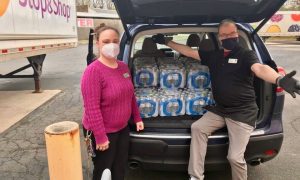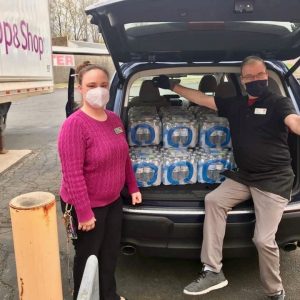WESTFIELD – While many residents think of the homeless as people they pass by, hanging out on the street, what they often do not realize is that many children attending the city’s public schools are homeless.
Jennifer Alexander knows first-hand about homelessness in Westfield’s public schools. As the Title I coordinator, Alexander works directly with families, school staff and community agencies to provide the best education – and help find permanent homes – for the city’s homeless students.
The good news is that currently there are 21 homeless families in the school system, which is a drastic decrease from last year’s 68. Although Alexander is still identifying homeless students, she said the downturn is a good sign.
“That means students and their families are finding housing,” she said. “They are signing leases, and that is a step toward a more permanent home.”
Alexander said homeless students in Westfield span all grade levels.
“From pre-K through high school, we have homeless students,” she said. “Their reasons for becoming homeless vary and are unique to them.”
According to the Stewart B. McKinney Act of 1994, a person is considered homeless if he lacks a fixed, regular and adequate nighttime residence; has a primary nighttime residency that is (A) a supervised publicly or privately operated shelter, (B) an institution that provides a temporary residence for individuals intended to be institutionalized, or (C) a public or private place not designed or ordinarily used as a regular sleeping accommodation for human beings.
Alexander said homeless students and their families often live in temporary shelters, hotels or motels, camping grounds, with friends, or “double-up” with another family.
Alternate housing for the homeless includes cars, parks, buses, public spaces and train stations. There is also a segment of the population who are the transitional homeless, often children awaiting foster care placement.
“We have students in almost every situation,” said Alexander.
When a family is placed in a temporary situation outside of Westfield, they can opt to keep their children in the Westfield schools, with the school department paying for transportation. Alexander said because Westfield has limited shelter resources, children often live in Holyoke and Springfield temporarily and a van transports them to and from school.
Alexander said part of her job is identifying homeless students. Sometimes, families report their situation to her directly. Other times, the Department of Children and Families notifies her of a homeless student. Working closely with local agencies to help these students is a big part of Alexander’s job.
“We have partnerships with them,” she said.
Last year, the schools partnered with Link to Libraries, a non-profit group that provides new books for children, which is something homeless children often do not have.
Alexander also works with other Title I coordinators in the region, especially in Holyoke and Springfield, where many families are temporarily located.
Alexander and her staff strive to make a positive impact on the lives of homeless students through providing: transportation to their regular schools; guidance support, academic assistance, and mentoring at Westfield Vocational Technical High School; free lunches; and, through the Stuff the Bus Campaign, a backpack filled with school supplies to every homeless student.
Alexander said the impact of poverty on students can include a loss of concentration, poor health and fatigue.
The causes of homelessness in Westfield are in sync with national trends, said Alexander. Unemployment, home foreclosure, substance abuse, and aging out of foster care are just some of those causes.
Alexander said more information, and help, is available through numerous agencies in the area.







